A great master of the art of appreciation of art, Kurt Rossacher of Vienna, demanded to see with nose first, eyes, tongue, heart, and only at last with the brain.
Reading a picture goes beyond mere observation; it involves delving into the layers of meaning, technique, and context that an artwork encapsulates. Art, like literature, communicates through a complex language of symbols, composition, and style.
By examining specific artworks such as Rembrandt’s “Bathsheba at Her Bath,” Rubens’ anatomically incorrect bodies, Ingres’ “Grand Odalisque,” and Picasso’s distortions, we can gain a deeper understanding of how to interpret and appreciate visual art.
Understanding the Language of Art
Reading a picture is a multifaceted endeavor that requires attention to detail, an understanding of historical and cultural context, and an appreciation for the artist’s technique and intent.
We can develop a richer, more nuanced understanding of art by examining the emotional depth in Rembrandt’s “Bathsheba,” the celebratory distortions in Rubens’ paintings, the classical and Romantic tensions in Ingres’ “Grand Odalisque,” and the perceptual challenges in Picasso’s works.
Rembrandt’s Bathsheba: A Study in Emotional Depth
Rembrandt’s “Bathsheba at Her Bath” (1654) is a masterful example of how an artist can convey deep emotion and narrative through subtle details. This painting depicts Bathsheba after receiving King David’s letter, summoning her to his palace.
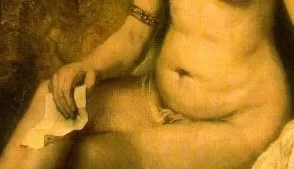

But there is more to be seen: She holds a piece of paper in her right hand, a letter obviously, so there is a story told, too.
The letter in her hand is a crucial detail, symbolizing the pivotal moment that will change her life.
If you read the painting, you see rich garment draped in the background. Her hair, ears, arm and neck are adorned with jewelry. She had obviously undressed here, probably bathed, as the maid dries her foot.
The maid is old but preciously dressed, too, so it is pretty clear that this is not an ordinary woman, this is an educated woman of wealth and style and leisure.
In this situation, being undressed and bathed, it is not to be expected that a letter arrives. She probably received that letter shortly before, read it a moment ago and just let sink her arm to her knee, looking into the void in front of her.
The letter leads the eye to her legs, and it appears that they are draped quite unusually. Once aware, you realize that other details, too, don’t look realistically, so it becomes apparent, that this is far from a photorealistic image.
The background, almost entirely in shadow, directs the viewer’s focus entirely on Bathsheba, emphasizing her isolation and the gravity of her decision.
Rembrandt’s use of light and shadow, known as chiaroscuro, highlights Bathsheba’s contemplative expression and the delicate rendering of her flesh.
Her posture, with her head slightly bowed and eyes cast downward, speaks volumes about her inner turmoil.
To read this picture, one must pay attention to the interplay of light and shadow, which not only defines Bathsheba’s form but also enhances the emotional weight of the scene.
Rubens’ Bodies: Celebrating Imperfection
Peter Paul Rubens, known for his exuberant Baroque style, often depicted bodies that were anatomically incorrect by classical standards. His figures are robust, with exaggerated curves and musculature that defy natural proportions.
This is evident in works like “The Three Graces” (1635), where the voluptuous forms celebrate sensuality and vitality rather than anatomical precision.
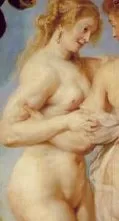

You can observe this phenomenon more vividly in many of Rubens’ paintings: bodies are often anatomically blatantly incorrect, legs don’t fit to bellies, arms not to chests, but the general impression is that of great, abundant life.
In the case of Helène Fourment, the belly arouses some very peculiar feelings, as does the shoulder of the left grace.
Reading a Rubens painting involves appreciating the dynamism and energy conveyed through his distorted figures. These exaggerated forms serve a purpose beyond mere representation; they evoke a sense of movement, abundance, and emotional intensity.
Rubens’ emphasis on fleshy, opulent bodies reflects the Baroque fascination with the physical and the dramatic. By understanding this context, viewers can appreciate the intended expressiveness and emotional richness of his work.
Ingres’ Grand Odalisque: Classical and Romantic Tensions
Jean-Auguste-Dominique Ingres’ “Grand Odalisque” (1814) presents another fascinating case of anatomical distortion. The elongated back and exaggerated proportions of the figure have puzzled and intrigued art critics for centuries.
Ingres combined classical ideals of beauty with Romantic exoticism, resulting in a figure that is both familiar and otherworldly.
To read “Grand Odalisque,” one must recognize the tension between the classical and the Romantic. The serene expression and poised posture of the odalisque contrast with the unnatural length of her back, creating a sense of otherness.
Ingres’ precise line work and smooth surfaces add to the painting’s ethereal quality. By understanding Ingres’ intention to blend different artistic influences, viewers can appreciate the harmonious yet disconcerting beauty of the work.
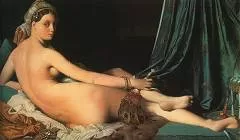

The back of Ingres’ Grand Odalisque is extremely funny, too long by at least three vertebrae, and the left leg is mounted somewhere near the navel, just to name two peculiarities.
What does that mean? Were these artists just not accurate enough?
Probably not. Distortion can express feelings and other things not easily expressed visually. People have known this for a long time.
You can see it at work as early as stone age paintings, where some are realistic as taken from life, others exaggerate certain portions at will.
Costumes of all ages are good examples, too. Any old hat gives your head a strong distortion and a strange expression to your whole person.
Picasso’s Distortions: Challenging Perception
Pablo Picasso, a pioneer of modern art, is renowned for his radical distortions of form. His Cubist works, such as “Les Demoiselles d’Avignon” (1907), deconstruct and reassemble human figures in a fragmented, abstract manner.
Picasso’s distortions challenged traditional notions of beauty and perspective, forcing viewers to reconsider how they perceive reality.
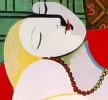

Picasso is famous for letting distortion work for him at will to produce feelings not to be expressed otherwise. In his case, these were mostly negative feelings, as in Guerníca, but there are positive, such as love and tenderness, too, seen very often in his portaits of Marie-Therèse.


Of course, Rembrandt knew this, too. What does he communicate us through the body of that woman Bathsheba, aside from beauty?
Reading a Picasso painting involves engaging with the multiple viewpoints and fractured planes that characterize his style. In “Les Demoiselles d’Avignon,” the figures are depicted from various angles simultaneously, creating a jarring yet dynamic composition.
Picasso’s use of angular forms and bold lines disrupts the conventional representation of space and form. By embracing this challenge, viewers can explore new ways of seeing and understanding the complexities of human experience.
Understanding the Language of Art
Each painting invites us to look beyond the surface and engage with the profound, often complex messages encoded within the visual language of the artwork.
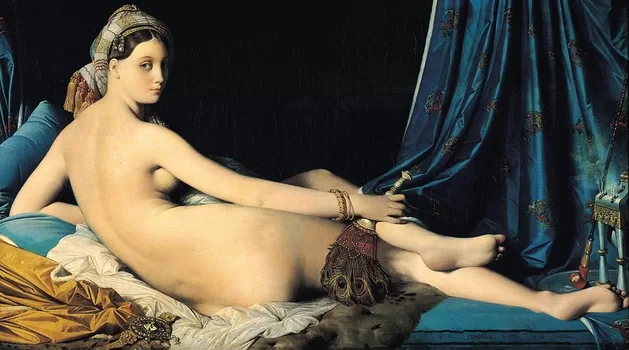

Jean Auguste Dominique Ingres, La Grande Odalisque, 1814
Related stories
Fine Art feature series
Iconophages: A History of Ingesting Images by Jérémie Koering
Art finance company Art Money on hold, refinances
Art Rentals Art Portfolio ° Geoffrey Dyer
Artist and Activist, Uncle Bruce Shillingsworth
Gabrielle Pool, Peek Gallery artist makes waves at Byron Bay
Warlimpirrnga Tjapaltjarri, central Australian artist, the Pintupi Nine



